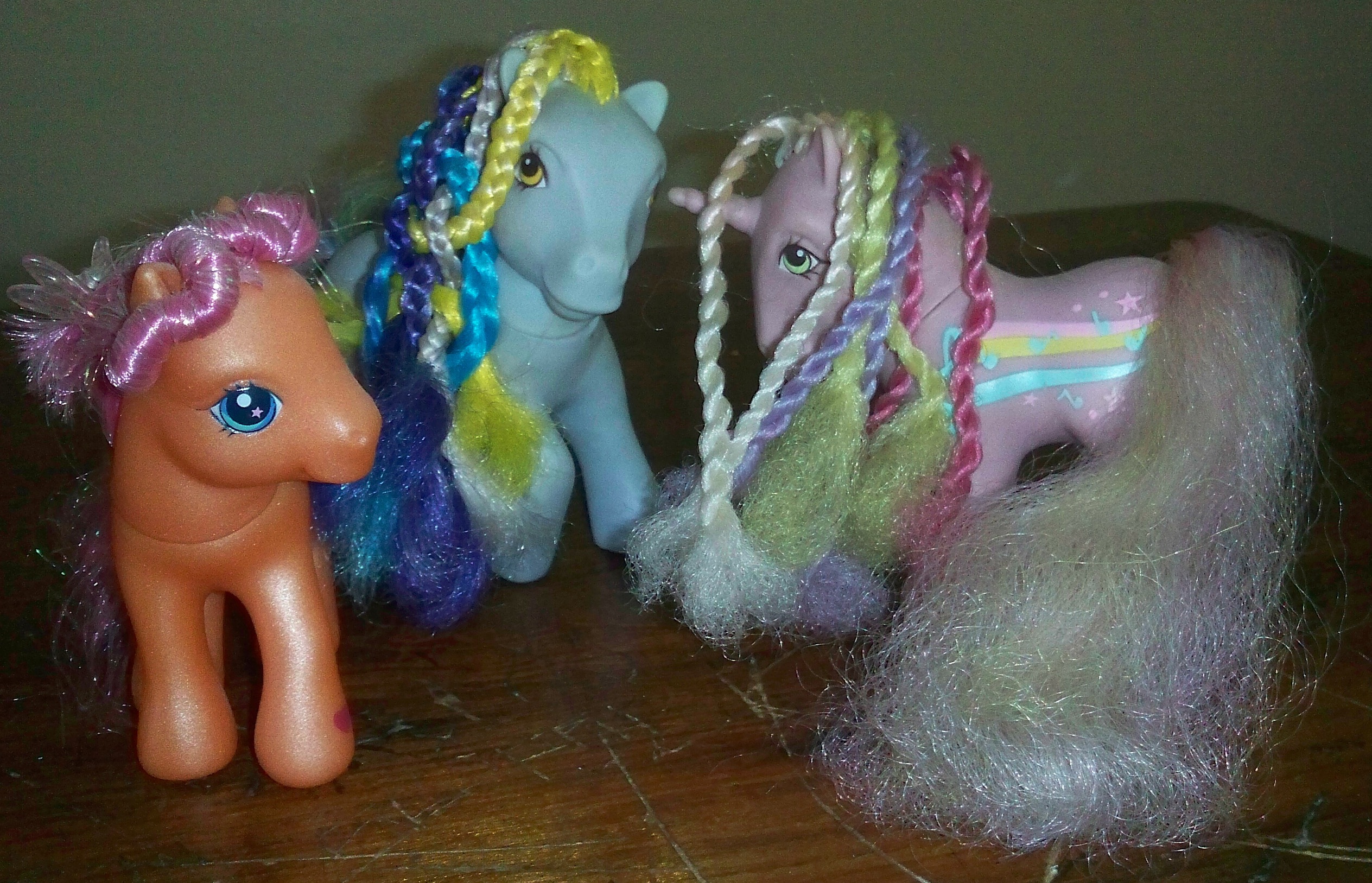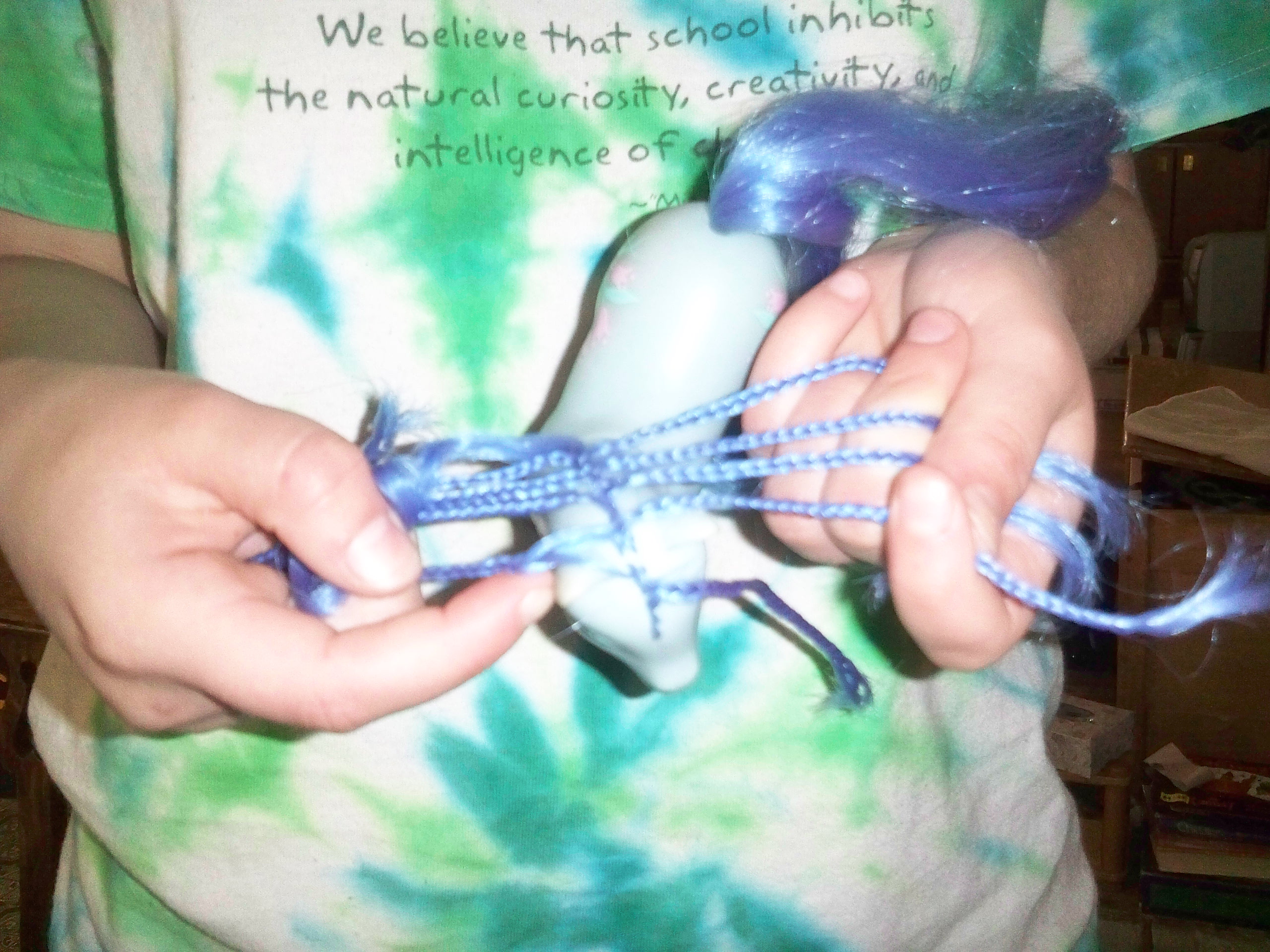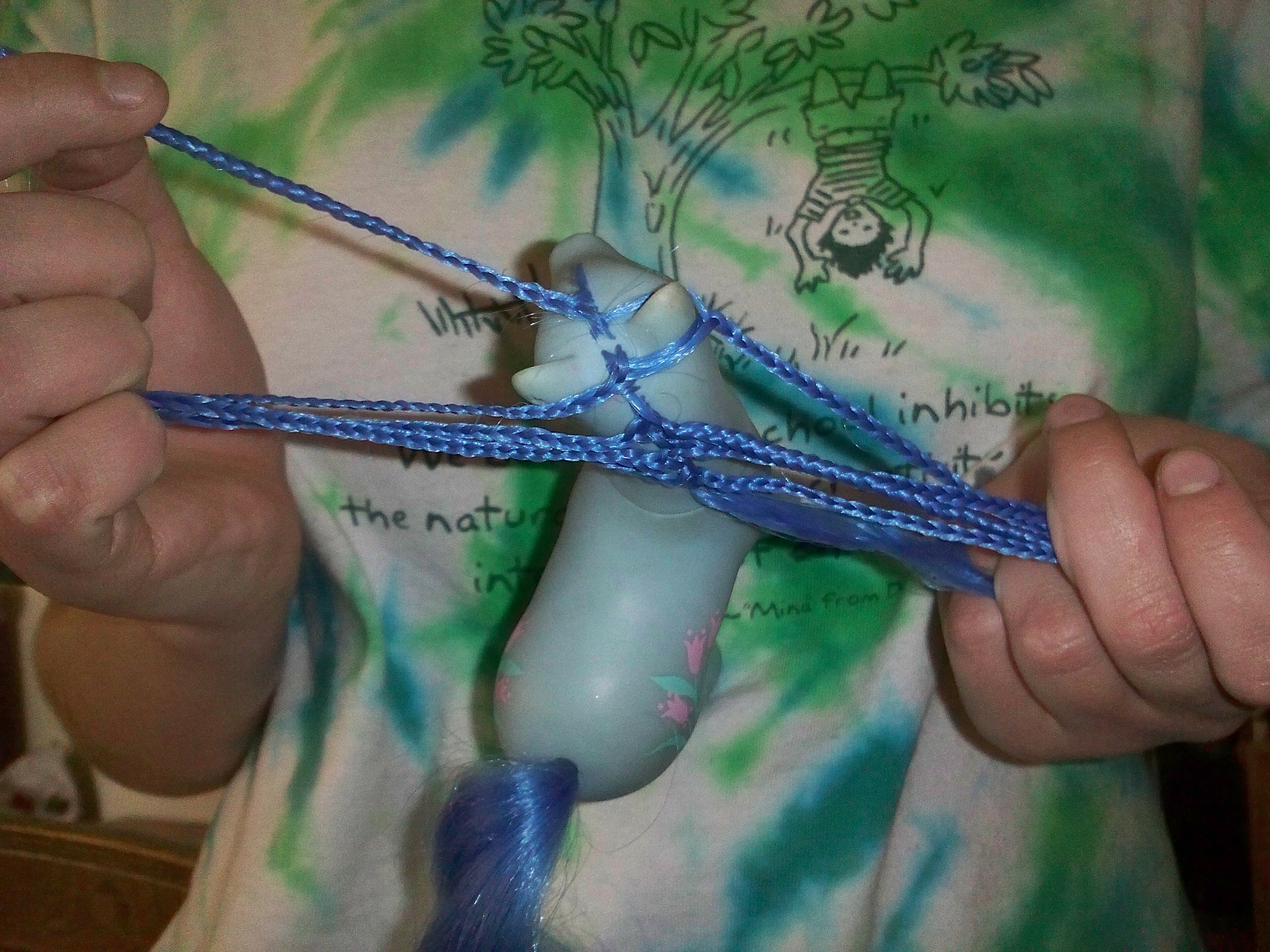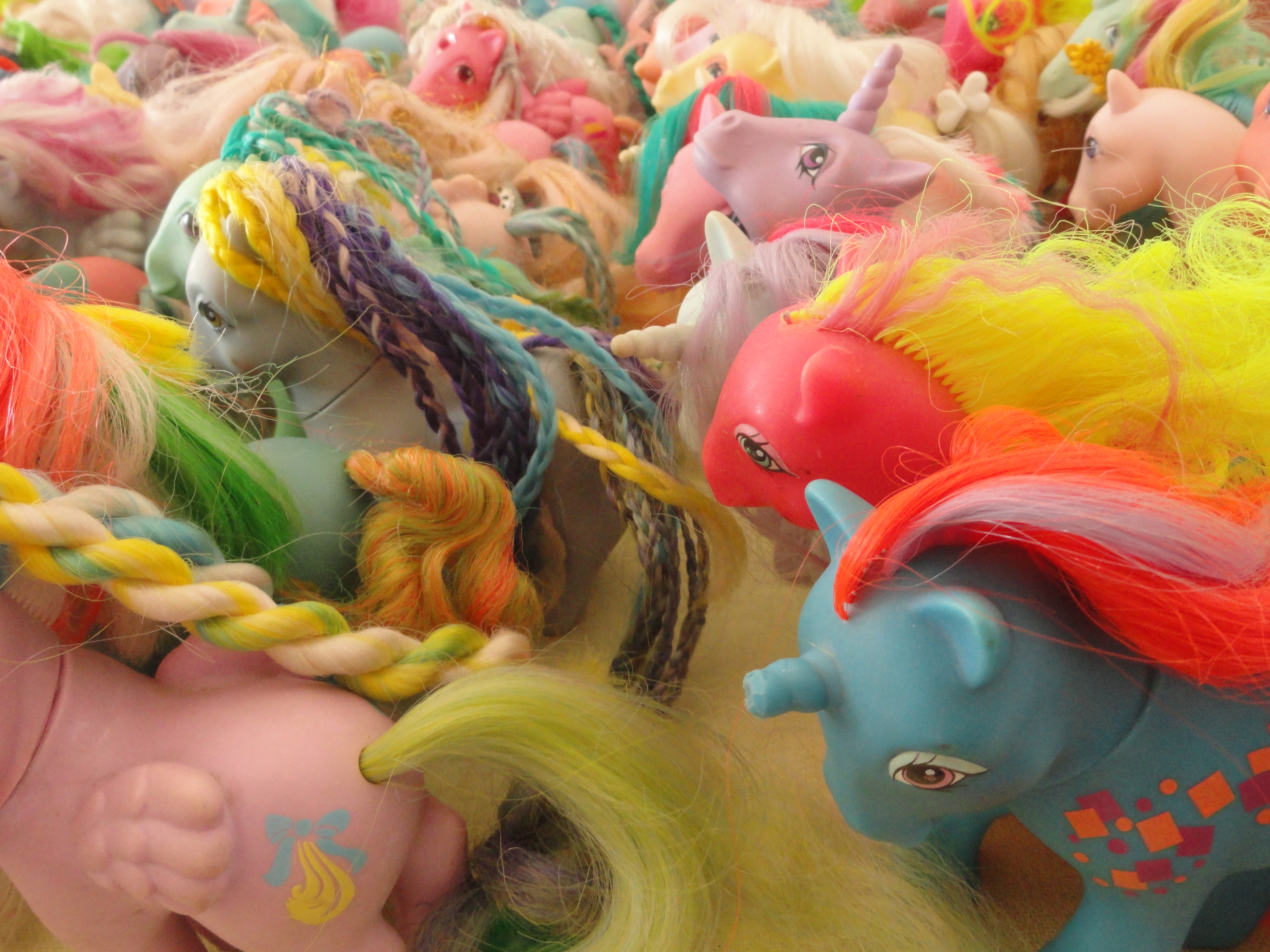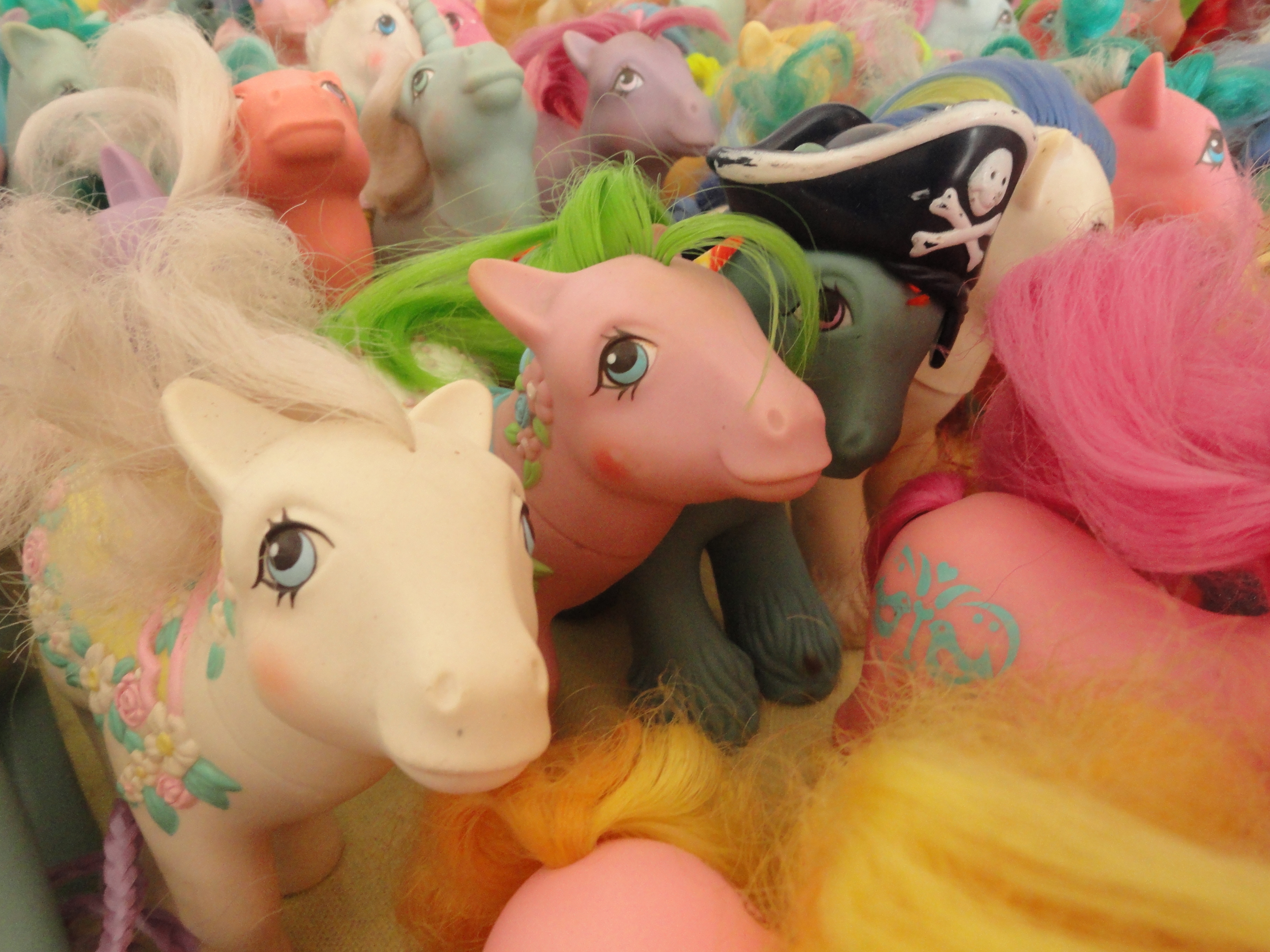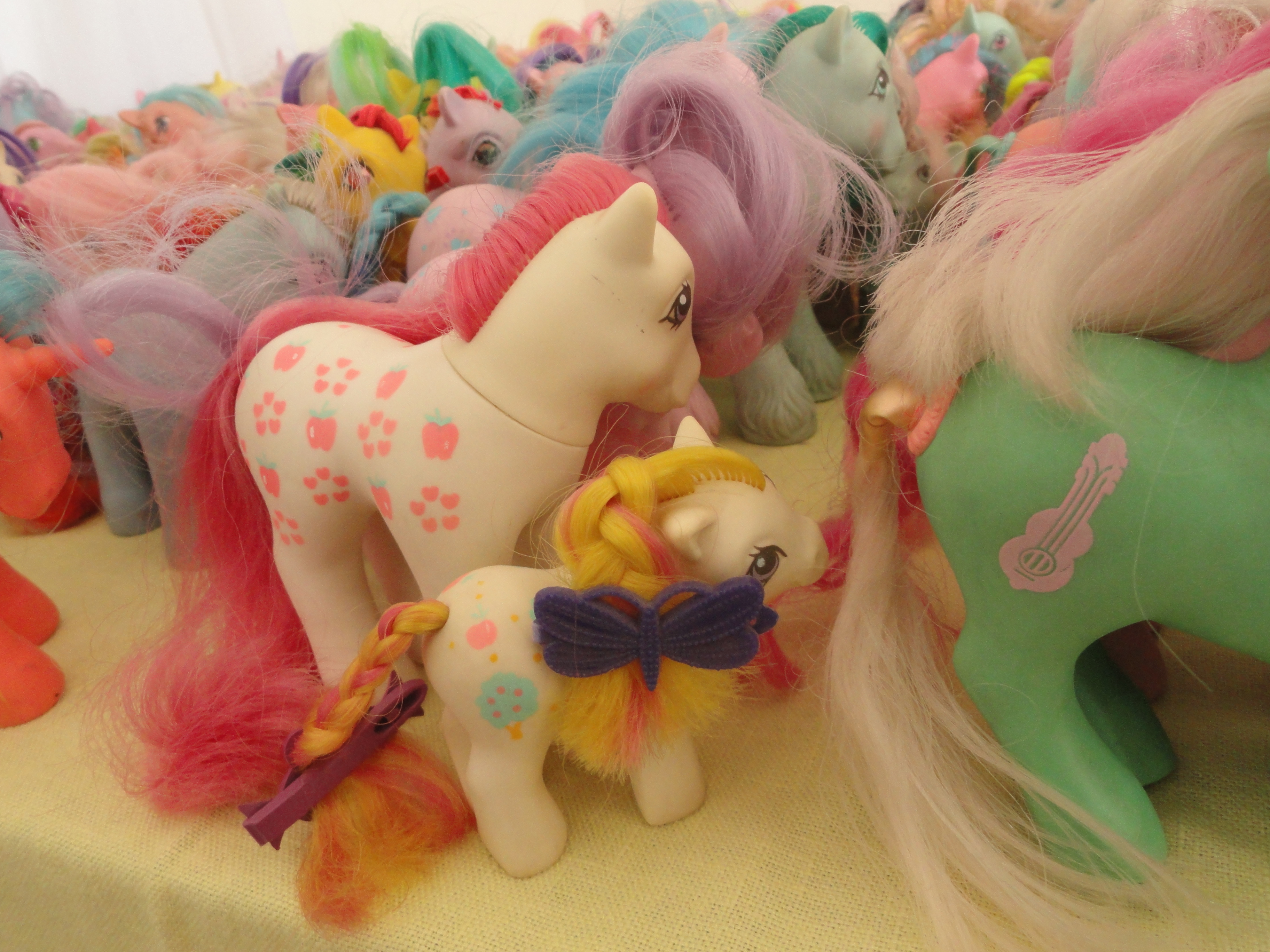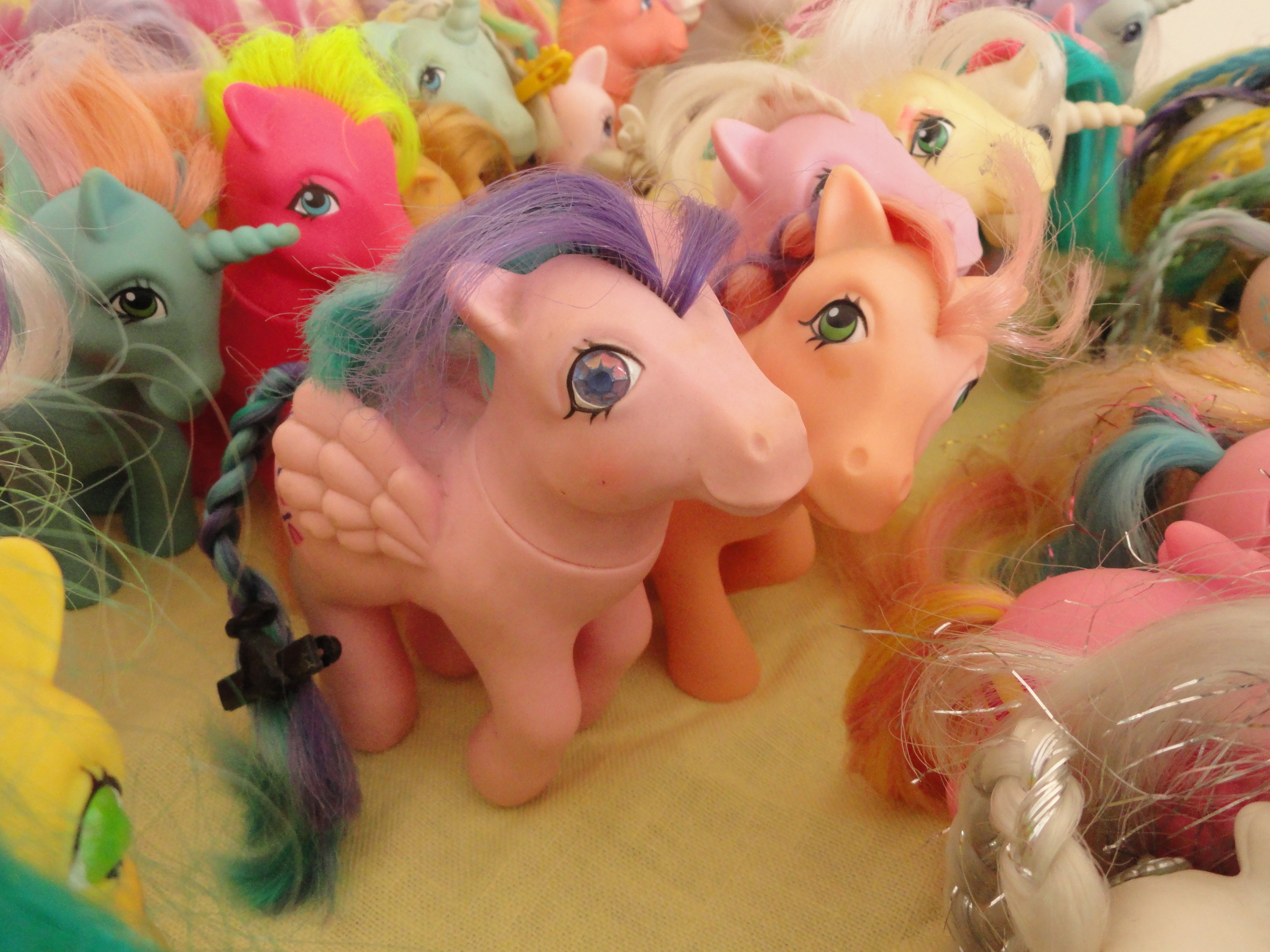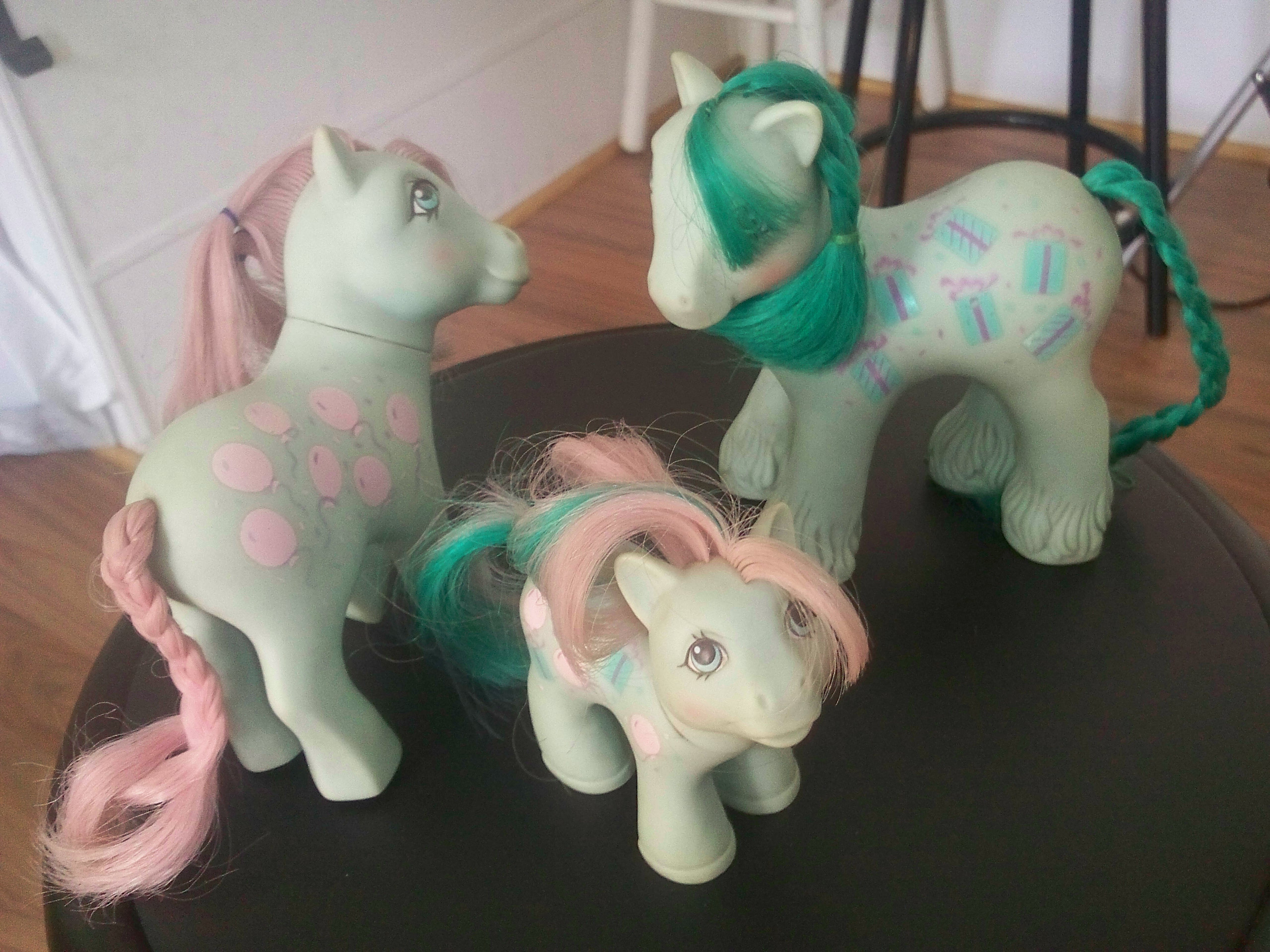

When I started, I took the hair on the Pony's tail and divided it into three pieces for braiding. Soon I became bored with a single braid. I then divided the tail into nine pieces and made three groups. I braided each group of three until I had three braids, then took these three braids and braided them together.
Soon I was up to starting with twenty-seven pieces (nested down to nine braids, then to three and then one) and then on to eighty-one. All the while I was learning about math: I saw that division is the process of taking a large number of things and grouping them into a smaller number of groups. In order to end up with one even braid at the end, I had to be able to divide the initial number evenly by three, then by three, and then by three again, until I ended up with just one braid.
I learned that I had to start with special numbers of pieces in order for the braid to come out evenly. These special numbers, of course, turned out to be powers of three. Overall, though, what I liked most about braiding was recursion. The large braid was made up of smaller braids that in turn were also made up of smaller braids, and I pushed this structure as far as I could take it. I once attempted to begin the braiding process with 243 pieces, but because each of these sections consisted of only about five strands of hair, I was forced to give it up.
With braiding on my mind, I began to see recursion everywhere. One night at the dinner table, I was eating cauliflower and I noticed that it had the same recursive structure of my braids. Moreover, the cauliflower seemed to continue to recurse forever. I began to divide the piece of cauliflower on my plate, determined to find the base level, but it split further and further until the pieces were too tiny to hold. My parents gave me a strange glance, and I continued to eat, still fascinated by the underlying structure of my vegetables.
